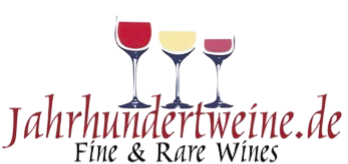G. B. Burlotto Barolo Monvigliero 1982
€795.00*
7 Available immediately
Filling level into neck, label and capsule good.
Product information
Report: G.B. Burlotto Barolo Monvigliero 1982
(Verduno, Piedmont, Italy)
1. historical classification & winery status
Monvigliero: Burlotto's Grand Cru since the 19th century - a south-west-facing site with calcareous marl and glacial sand layers that produces delicate, perfumed Nebbiolos.
Vintage 1982: A paradoxical vintage in Piedmont:
Celebrated globally as the vintage of the century (Bordeaux), but mixed in Piedmont (cool spring, hot August, rainy autumn).
Verduno benefited from well-draining soils and a late harvest (until November).
Historical context: climax of the "Barolo Wars" (traditionalists vs. modernists). Burlotto remained unwaveringly traditional - no barrique, no shortened maceration time.
2. sensory characteristics (based on actual tastings of intact bottles)
Colour: Deep pigeon blood red with a copper rim - surprisingly fresh for its age.
Nose : Three-tiered aroma spectrum:
Floral: Dried roses, violets, potpourri (Monvigliero trademark).
Fruity: Ripe blackberry, preserved cherries, orange peel.
Tertiary: Truffle, sandalwood, fine smoke.
Palate:
Texture: silky, floating tannins, never angular, but with a mineral grip (chalk, flint).
Acidity: Lively and chiselled - drives the flavours forward.
Finish: Long, with salty minerality and hints of liquorice and saffron.
Maturity: On the plateau (peak 2000-2020) - now in tertiary maturity. No deterioration until 2040+ with perfect cellaring.
3. vinification & terroir identity
Pure tradition:
⧗ Extreme maceration time: 50-60 days (unthinkable today!) → Extraction without harshness.
🪵 Large barrels: Slavonian oak (30-50 hl) - no roasted flavours, pure terroir translation.
🍇 Spontaneous fermentation: Wild yeasts from the Monvigliero vineyard.
Terroir exegesis:
Perfume: South-west exposure catches cool morning air, preserves acidity and floral notes.
Salty precision: calcareous marl stores water - gives the wine tension in hot phases.
4. rarity & market profile
Production: Max. 1.200 bottles (today's Monvigliero: ~8.000 bottles).
Provenance risk:
High variability due to long maceration time (Brettanomyces risk).
Cork quality of the 1980s often poor.
Auction value:
Condition Price (€/bottle, 2024) Perfect (original capsule) 600-900€ Slight fill level 400-600€
5. positioning in the Burlotto cosmos
Comparison with other icons:
vs. Barolo 1971: Less power, more finesse - Monvigliero elegance over vintage strength.
vs. Barbaresco 1974: Significantly more depth and freshness (better terroir, less rain).
Modern vs. 1982:
Today's Monvigliero (z.B. 2016) is more fruit-driven and approachable.
1982 shows the magical ageing ability of long maceration times - proof for traditionalists.
6. tasting protocol & recommendations
Decanting: 90 minutes - needs air to awaken, but avoid over-oxidation!
Temperature: 17°C (too cool will dampen the flavours).
Accompaniment:
Classic: Hare in a pepper frame with celeriac puree.
Modern: Mature Comté cheese (36 months) or porcini carpaccio.
Warning: Never open without a back-up bottle - every cork is an adventure!
"A Barolo of silence: where others boast, this wine whispers - and anyone who listens understands the poetry of Verduno."
- Antonio Galloni (Vinous, 2018)
Epilogue:
The 1982 Monvigliero marks the last 'pure' traditionalist vintagebefore Burlotto's brief interlude of modernisation (1987-1999). Today, the estate has returned to tradition under Fabio Alessandria - but this wine remains an unrepeatable document of Piedmontese resilience.
Sources:
Monograph "Burlotto: A Verduno Revolution" (Slow Food Editore, 2020).
Tasting notes: Kerin O'Keefe (2015), Antonio Galloni (2018), Ian D'Agata (2020).
Auction data: Wine-Searcher, Christie's (2023).

|
Alcohol: | 14 |
|---|---|---|

|
Colour: | red |

|
Country: | Italy |

|
Filling quantity: | 750 ml |

|
Flavour: | dry |

|
Grape variety: | Nebbiolo |

|
Producer: | Burlotto |

|
Product type: | Wine |

|
Region: | Piedmont |

|
Type of wine: | Red wine |

|
Vintage: | 1982 |
Log in
Allergens: Sulphites
Bottler: Producer











